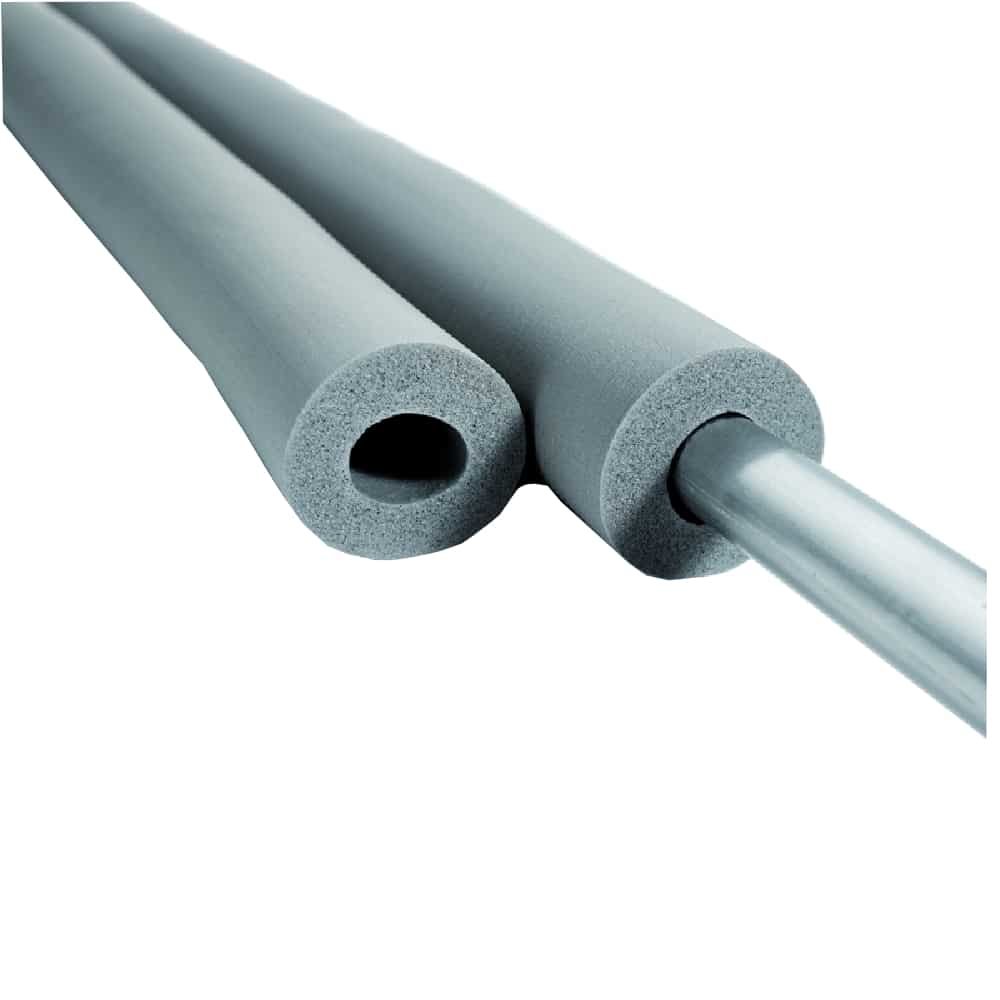INSUL-TUBE® H PLUS rubber 2m pipe insulation
IMPORTANT NOTICE!
In order to comply with the new GEG regulation the insulation thicknesses have increased.
The designations, however, have remained the same!
For example, select pipe diameter 18mm and insulation thickness 20mm
you now get pipe diameter 18mm and insulation thickness 26mm !
Check the respective table below to make the right selection.
Under reference, the common designation is given and under "B" you will find the actual insulation thickness.
Product Description:
Flexible pipe insulation made of closed-cell soft foam based on synthetic rubber, insulation thickness according to GEG.
Material:
Soft foam based on synthetic rubber
Application Area:
Heating and sanitary area according to GEG and cold water pipes DIN 1988 200
Length: 2m rods
Color: Gray
Thermal Conductivity:
(EN ISO 8497)
at 10°C:
0.032 W / mK = 6-16 mm
0.035 W / mK = 17-29 mm
0.037 W / mK = 30-45 mm
at 40°C:
0.035 W / mK = 6-16 mm
0.038 W / mK = 17-29 mm
0.040 W / mK = 30-45 mm
at 70°C:
0.038 W / mK = 6-16 mm
0.041 W / mK = 17-29 mm
0.043 W / mK = 30-45 mm
Temperature Operating Range:
up to + 110 °C (EN 14707)
Fire Behavior:
6 - 29 mm = BLs3d0 (EN 13501-1)
30 - 45 mm = CLs3d0 (EN 13501-1)
* = Euroclass E
Insulation thicknesses:
10, 15-18, 20-24 and 30-54 mm
50% GEG
- Pipes and fittings in wall and ceiling penetrations, in pipe intersection areas, at pipe connection points, at central pipe distributors
- Pipes in structures, between heated rooms of different users
100% GEG
- Pipes in unheated rooms and in basement rooms
- Pipes in exterior walls and structures between unheated rooms, in ducts and shafts
- Pipes for the supply of multiple parties
- Hot water pipes
- Hot water pipes with a water capacity of up to 3 liters, which are neither included in the circulation loop nor equipped with electric trace heating (branch lines) and are located in heated rooms. (*)
* Although there are no requirements here, insulation is necessary for the following reasons:
Corrosion protection, avoidance of knocking and flow noises, air and structure-borne sound insulation, reduction of heat load. To maintain user comfort, the hot water pipe should be insulated so that there is no unnecessary cooling through components, etc.





